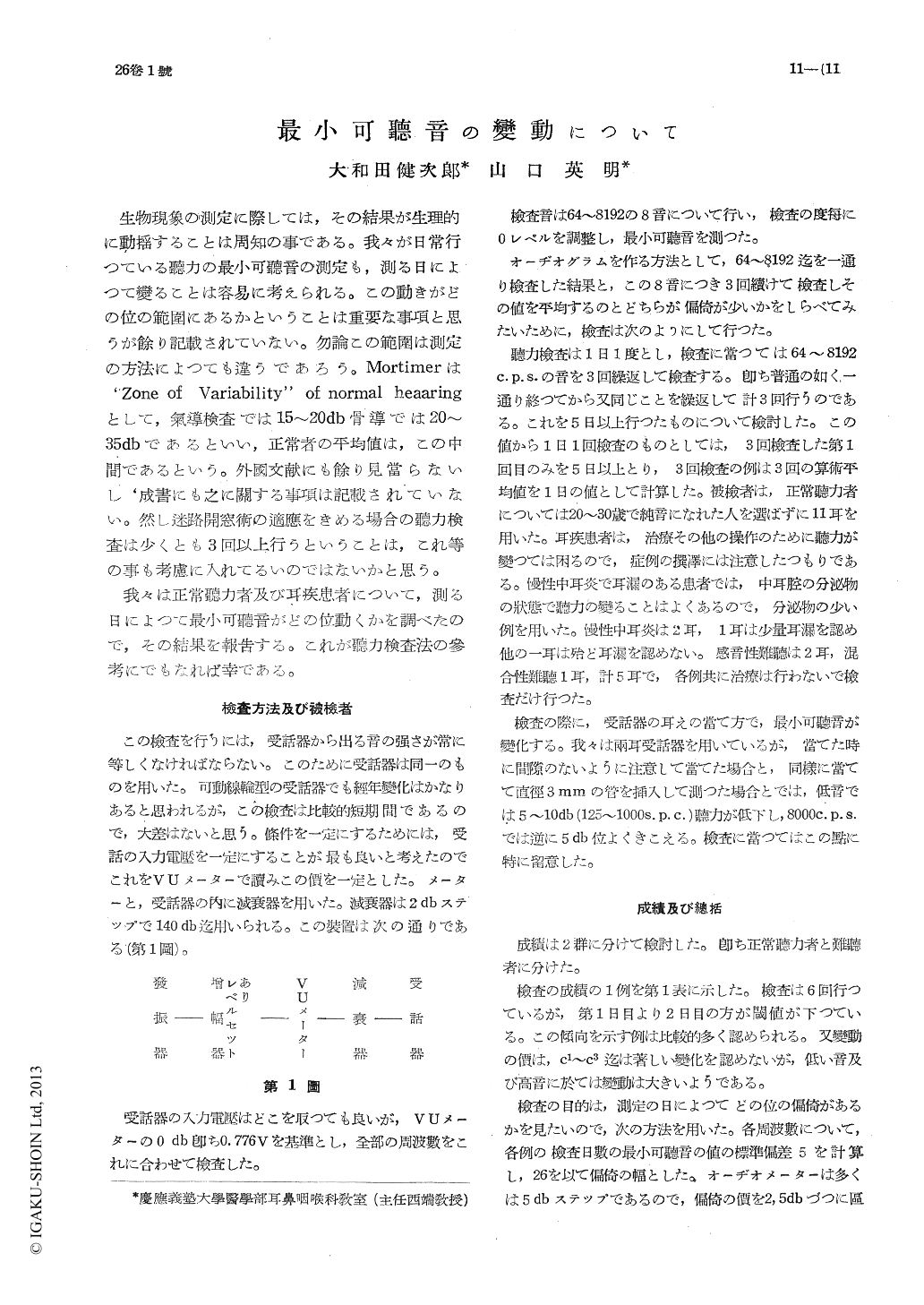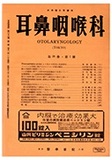- 有料閲覧
- 文献概要
- 1ページ目
生物現象の測定に際しては,その結果が生理的に動揺することは周知の事である。我々が日常行つている聽力の最小可聽音の測定も,測る日によつて變ることは容易に考えられる。この動きがどの位の範圍にあるかということは重要な事項と思うが餘り記載されていない。勿論この範圍は測定の方法によつても違うであろう。Mortimerは"Zone of Variability"of normal heaaringとして,氣導検査では15〜20db骨導では20〜35dbであるといい,正常者の平均値は,この中間であるという。外國文献にも餘り見當らないし‘成書にも之に關する事項は記載されていない。然し迷路開窓術の適應をきめる場合の聽力検査は少くとも3回以上行うということは,これ等の事も考慮に入れてるいのではないかと思う。
我々は正常聽力者及び耳疾患者について,測る日によつて最小可聽音がどの位動くかを調べたので,その結果を報告する。これが聽力検査法の參考にでもたれば幸である。
OWADA and YAMAGUCHI made studies on readings of threshold hearing, in person who had normrl hearing and those who were affect-ed with hard of hearing, with a view that there might be an appreciable range of fluctuation in the thresholds when they are taken at dif-ferent times. Using 8 tones, 64-8192 db, tests were made wilh 15 sittings for each individual that evtended over the period of 5 days. It was shown that 11 normal ears there was a range of fluctuation which amounted to 10-12.5 db and with 5 that were hard of hearing that of 12.5-17.5 db. When threshold tests were performed with three repeated readings at one sitting and the average value of which was compared to reading of a single test as it is usually executed the difference was 5 db.

Copyright © 1954, Igaku-Shoin Ltd. All rights reserved.


